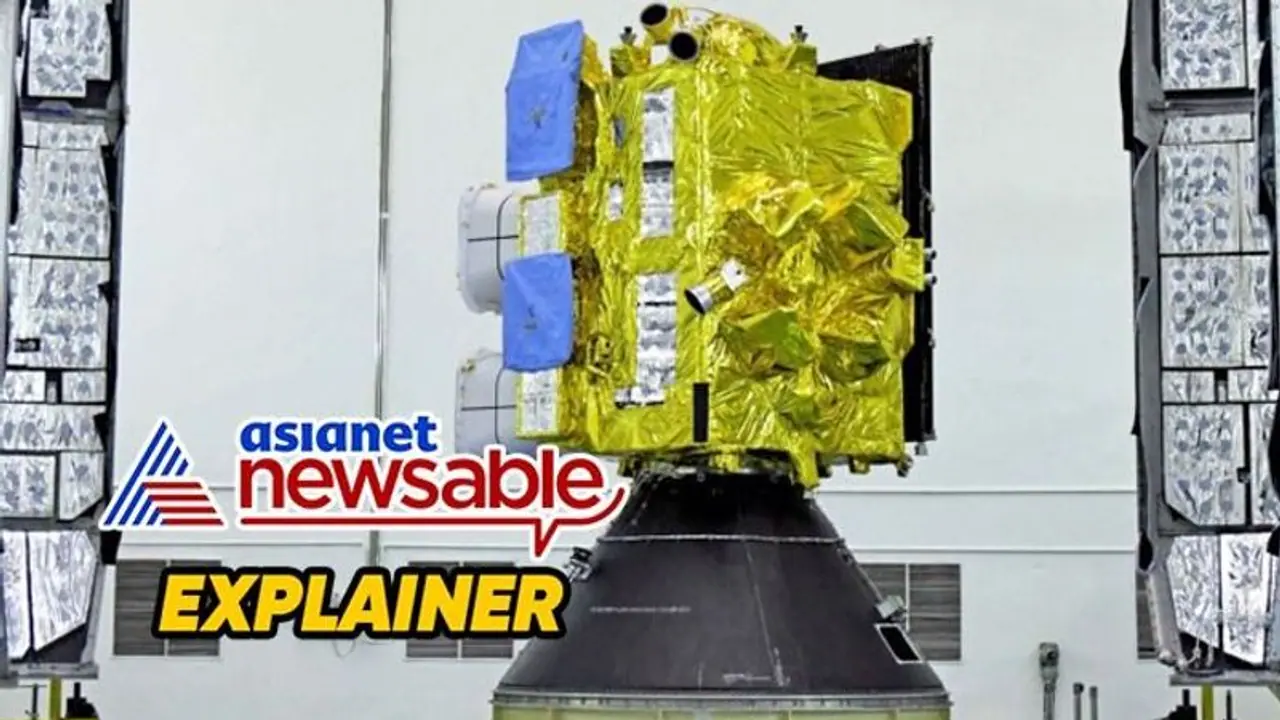The INSAT-3DS satellite, designed to enhance meteorological observations and disaster warnings, is the latest addition to India's geostationary weather satellite series. Girish Linganna explains
INSAT-3DS satellite is engineered to improve meteorological observations and oversee both land and ocean surfaces to aid in weather prediction and issue warnings for disasters. INSAT-3DS serves as a successor in the series of Third Generation Meteorological Satellites from its position in geostationary orbit. Currently, meteorological data extensively utilized by weather scientists is sourced from satellites such as INSAT-3D (2013) and INSAT-3DR (Repeat), which was launched in September 2016 and remains in operation.

The project receives its funding from the Ministry of Earth Sciences.
During its journey through the atmosphere, the satellite is protected by a structure called the Ogive payload fairing. In simpler terms, the Ogive payload fairing is like a protective cover that shields the satellite from the harsh conditions of the atmosphere as it travels into space. This cover is shaped to be aerodynamic (cone shape), helping the satellite to move smoothly through the air as it ascends.
ISRO's newest weather satellite is being sent into space using a GSLV F14 rocket. This satellite is part of a series, coming after the INSAT-3DR (Repeat) mission. It's planned to launch on February 17, 2024, from the Satish Dhawan Space Centre, Sriharikota, Andhra Pradesh at 5.35 pm. The INSAT-3DS weather satellite is intended to be put into a Geosynchronous Transfer Orbit (GTO). Following this, additional manoeuvres will be conducted to position the satellite into a Geostationary Orbit.
'Orbit Transfer and Challenges'
The Geostationary Transfer Orbit (GTO) is a stretched oval-shaped path around Earth, used to send satellites into space, with its closest point (perigee) about 250 kilometres (155 miles) from Earth and its farthest point (apogee) much further away. This leads to the satellite being moved to a Geosynchronous orbit, which is a circular path approximately 35,786 kilometres (22,236 miles) above Earth. It's directly overhead of Earth's equator
The elliptical nature of GTO contrasts with the circular shape of the Geosynchronous orbit, allowing satellites to maintain a stationary position over a specific point on Earth, ideal for communications and weather observation.
The GSLV, tasked with deploying the INSAT-3DS, has earned the nickname 'naughty boy' from a former head of the Indian Space Research Organisation (ISRO) due to its high failure rate. Specifically, the rocket has not succeeded in six of its 15 launches, resulting in a failure rate of 40 per cent.
Innovative Meteorological Instruments
Constructed on ISRO's dependable I-2k bus framework, the INSAT-3DS satellite weighs 2,275 kg at launch and comes with advanced equipment for improved weather monitoring.
i) The I-2k bus framework is like the chassis of a vehicle, providing the foundational structure on which satellites are constructed. It's a standardized base that ISRO uses, allowing for various satellite components to be added or customized efficiently, much like building a car with different features on a common frame.
The "1-2k" in the I-2k bus framework refers to its capacity to support satellites with a mass of approximately 1,500 to 2,500 kilograms.
ii) This satellite carries advanced technology, including a 6-channel Imager and a 19-channel Sounder, both dedicated to meteorological purposes. They are aimed at observing the Earth's land and sea areas. These instruments are essential for providing vital information that aids in precise weather predictions and establishing early warning systems for natural calamities, thus enhancing India's readiness and response measures.
iii) Moreover, INSAT-3DS is equipped with communication tools like the Data Relay Transponder (DRT) and the Satellite Aided Search and Rescue (SAS&R) transponder. The DRT is set to collect information from automated Data Collection Platforms and Automatic Weather Stations (AWS), which will improve the nation's ability to forecast weather more accurately.
The SAS&R transponder plays a crucial role in worldwide search and rescue efforts, designed to transmit emergency signals and alerts received from beacon transmitters.
GSLV: Orbital Launch Workhorse
GSLV is a three-stage 51.7 m long launch vehicle with a liftoff mass of 420 tonnes.
* The first stage (GS1) includes a solid fuel motor (S139) with 139 tonnes of propellant, alongside four strap-on boosters, each loaded with 40 tonnes of liquid fuel that can be stored at room temperature.
* The second stage (GS2) also uses a propellant that can be stored at ambient conditions, carrying a total of 40 tonnes of fuel.
* The third stage (GS3) operates on cryogenic technology, fueled with 15 tonnes of liquid oxygen (LOX) and liquid hydrogen (LH2).
* The GSLV is versatile and capable of deploying various types of satellites for communication, navigation, earth observation, and specialized missions.
